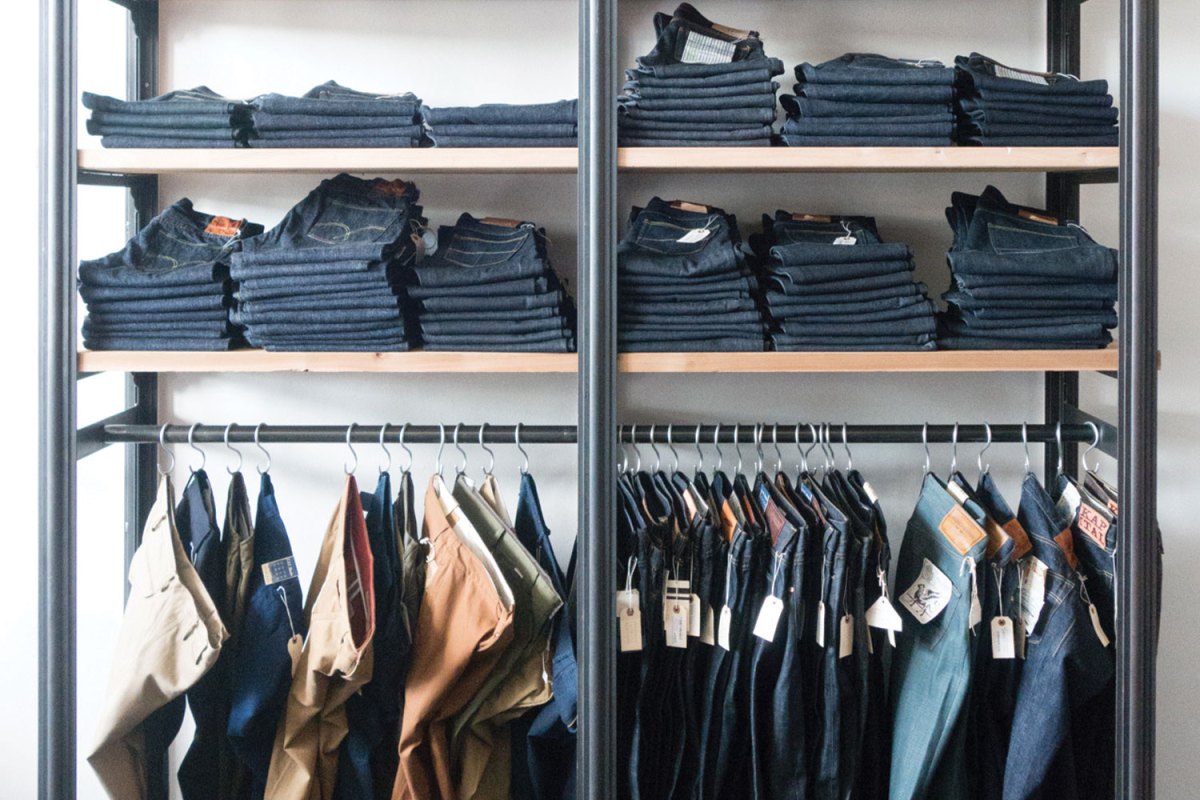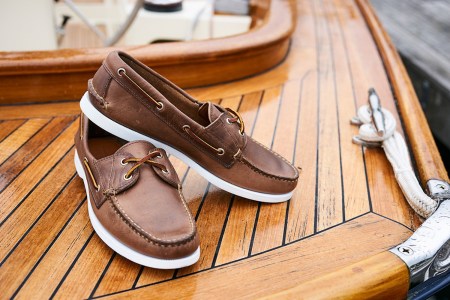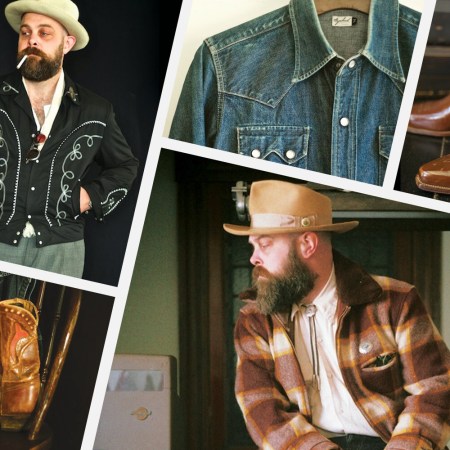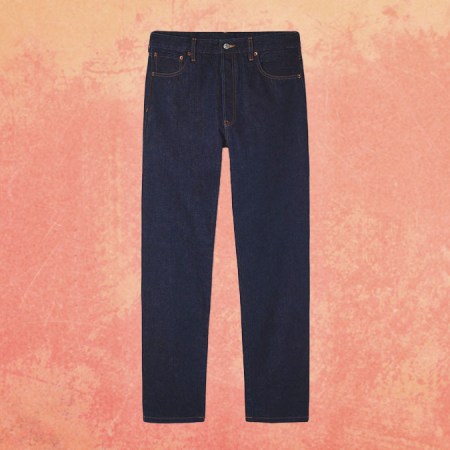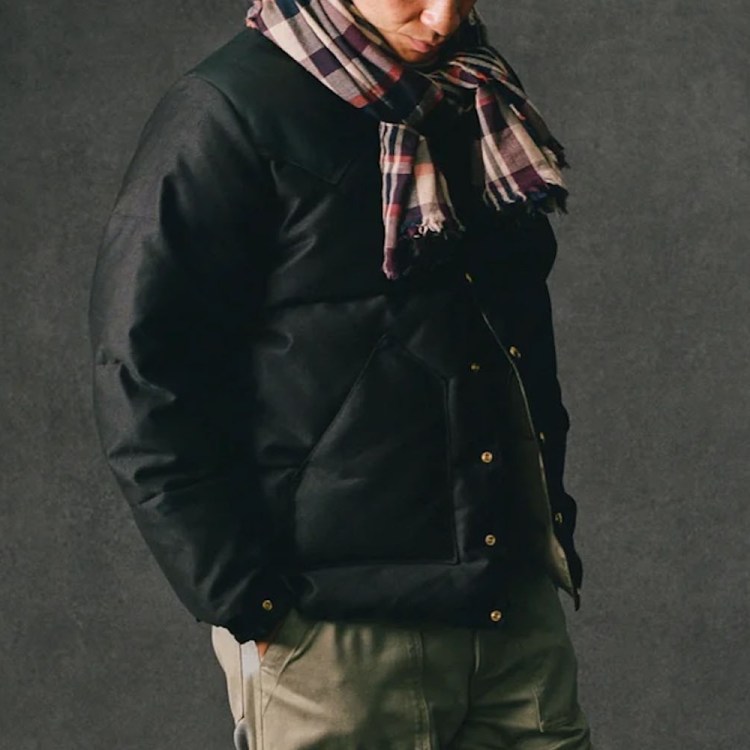There was a time, not long ago (and before inflation), when spending north of $100 on a pair of jeans was considered an absurd extravagance. After all, that disposable income could be put towards a suit.
But in an era where men dress largely the same at home and the office — if they even go into one — denim is increasingly viewed as a worthy investment. As a result, the clothing industry is saturated with five-pockets going for three figures (or even four, in the case of some particularly pricey jeans from Brunello Cuccinelli).
If you’re comfortable treating a pair of $390 Acne Studios jeans like a disposable good, you can stop reading here. But if you want to extract every dollar’s worth out of your indigo-dyed investment, we’ve contacted two of the field’s top experts: Jeremy Smith of indie retailer Standard & Strange, whose stores in Oakland, Santa Fe and New York carry choice denim from specialist makers across the globe, and Raleigh Denim Workshop co-founder Victor Lytvinenko, who carries on North Carolina’s long — if almost extinct — tradition of denim manufacturing.
From pre-purchase considerations to washing and repair, we picked both their brains to ensure your next denim splurge is not in vain.
Before You Buy
A few factors will affect the lifetime of your jeans before you ever step foot in them. The most important of these may be weight, and as a general rule, the lighter the jeans, the shorter the lifespan. “Lighter weights are more comfortable, but under 12oz the drape starts to get weird, and obviously, there’s less fiber in a lighter weight denim, so they wear out faster,” says Smith.
Lytvinenko agrees, pointing to an ideal weight of 12.75oz as being his sweet spot between comfort and longevity.
But judging a jean by weight alone can miss another indicator of its durability: the tightness of the weave. “A tightly woven 14oz will last longer than a loose-weave 16oz,” Smith says.
Lastly the jean’s silhouette may impact how long it lasts — or how long you want it to last.
“Closer cuts will create more friction, and more extreme (skinny, taper, very wide) cuts will date the jeans and take them out of your rotation sooner,” says Smith.
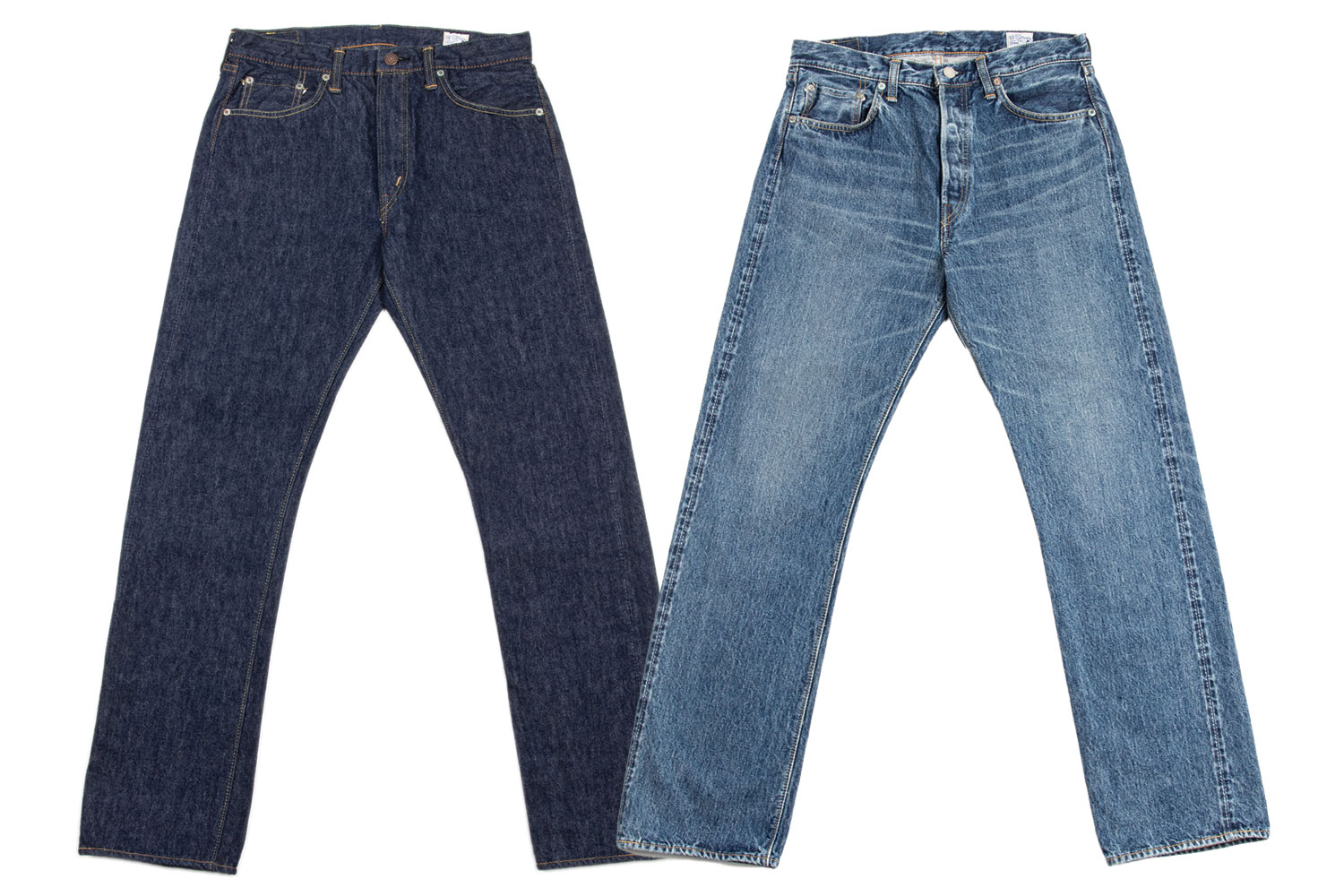
To Wash or Not to Wash?
No topic among denim-heads is more fraught than a jean’s first wash, with message board true believers advocating for bathtub soaks, deodorizing stays in the freezer or even forgoing washing altogether. Such arcane methods were not shared by our experts, who simply advocate machine-washing jeans in cold water turned inside-out before being hung to air-dry.
What they do prescribe is to hold off on that inaugural wash for as long as possible. That may be 30 to 60 wears in Smith’s estimation, or even two whole seasons for Lytvinenko, who says he will start breaking in a new pair in September and wait to wash until spring (or until they smell, whichever comes first).
The benefit of so much pre-wash wear is that the jeans become imprinted with the wearer’s body, developing the creases, whiskers and fades that will be highlighted by that maiden wash.
“That really sets the future look of the jean for a very long time and that’s something that’s very personal because it’s actually wrapping your muscles and bones, and it’s a completely specific singular ‘wash,” says Lytvinenko “It’s almost like this inverse reflection of your life for that period of time and I find that to be just really magical.”
Earning your sick fades is an aesthetic bonus, but there’s a practical benefit to washing, too: dirty jeans die faster. “Excessive dirt will wear away at the fibers, leading to crotch-blowout and holes sooner than you’d like,” Smith warns.
Once that first wash establishes the jean’s look, subsequent cleans can be done on a more frequent basis. Lytvinenko washes his broken-in jeans bimonthly, while Smith simply suggests washing them whenever they get dirty.
How Rancourt Built America’s Next Great Heritage Brand
Inside the family business that saved itself from offshoring, weathered a pandemic and continues to make moccasins the old-fashioned Maine wayBeware the Glare
The topic of how denim is stored doesn’t get much attention, perhaps because there’s not much that can go wrong: as a cotton garment, they won’t attract wool-loving moths. Just make sure that they aren’t exposed to the sun in storage, which can result in irregular fades.
“Sunlight will make jeans fade pretty quickly but not in a good way. Whatever part is in the sunlight will discolor,” Lytvinenko says.
Repair, Don’t Replace
Holes are an inevitability, but when and where they appear will vary greatly depending on the jean’s composition and how frequently they are worn. Lytvinenko says he encounters them about two to three years into a jean that’s been worn roughly every other day.
He and Smith both recommend at-home fixes for smaller rips and tears, with the former seeing an added value in homemade repairs, which needn’t be perfect.
“I highly recommend that people hand-stitch their own mends. I think that there’s another level of spiritual connection of taking care of the thing that you care about,” Lytvinenko says. “You can pay other people to do it, but I find that hand-mends are more beautiful, more meaningful, and make the jean more special.”
Meanwhile, what Smith classifies as “big reconstruction jobs” — such as crotch blow-outs or pocket bag replacements — should in his opinion be handled by professionals, including Standard & Strange.
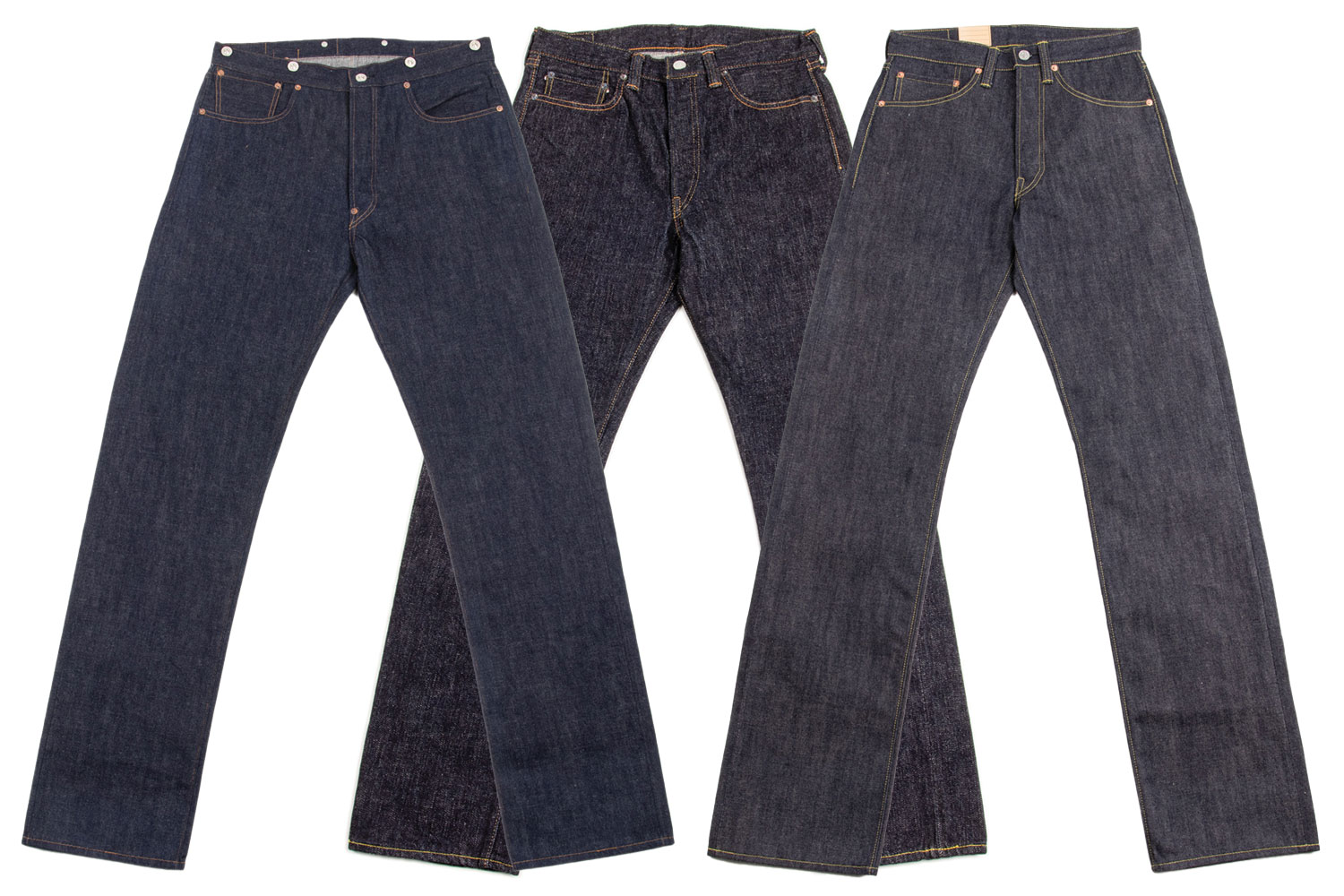
Was it Worth It?
When it comes to evaluating whether your denim investment was “worth it” — whatever that means to you — a useful metric may be the notion of cost-per-wear. As Lytvinenko quantifies it, imagine wearing a pair of $445 selvedge denim jeans — such as those made by Raleigh Denim Workshop — roughly 150 days each year for three years.
“That’s less than a dollar a day for wearing one of the best pairs of jeans in the world,” he says.
Naturally, that cost-per-wear price drops the longer a jean’s wearability is maintained, which in Smith’s personal estimation, can be anywhere from five to 25 years or more.
“I don’t consider a pair dead until there’s nothing left to repair, and if you stay ahead of the repairs, they’ll look amazing and last much longer,” he says. “By that I mean darning small holes before they get bigger, fixing up blown seams early, and so on.”
And if a pair does expire before Smith’s benchmark—likely due to daily wear—its heavy wardrobe rotation will still reap big dividends. “I do see jeans where the owner has just one pair and wears them daily, and they’ll just last three to four years or even less. But the cost per wear is still tiny.” he says.
But attempting to measure how much coin was wrung from each wear risks missing what we love about jeans in the first place.
“The reason I fell in love with denim is it evolves and changes as you do in your life,” Lytvinenko says. “It becomes a part of your skin, a part of your bones, a part of your muscles. It’s hard to put a price on that.”
This article appeared in an InsideHook newsletter. Sign up for free to get more on travel, wellness, style, drinking, and culture.
